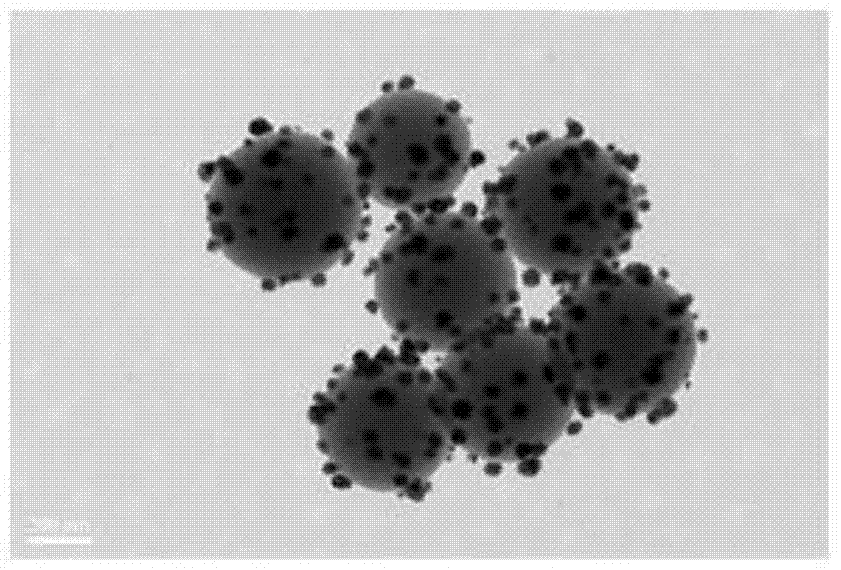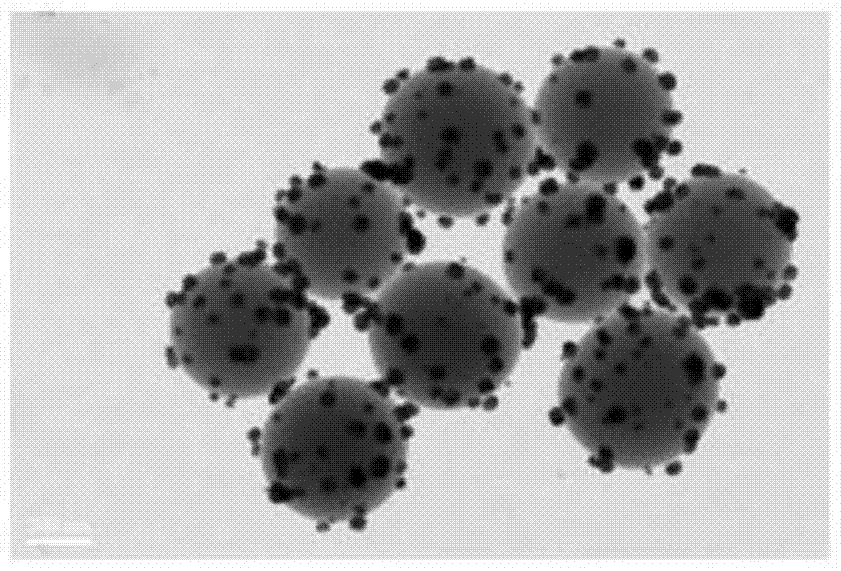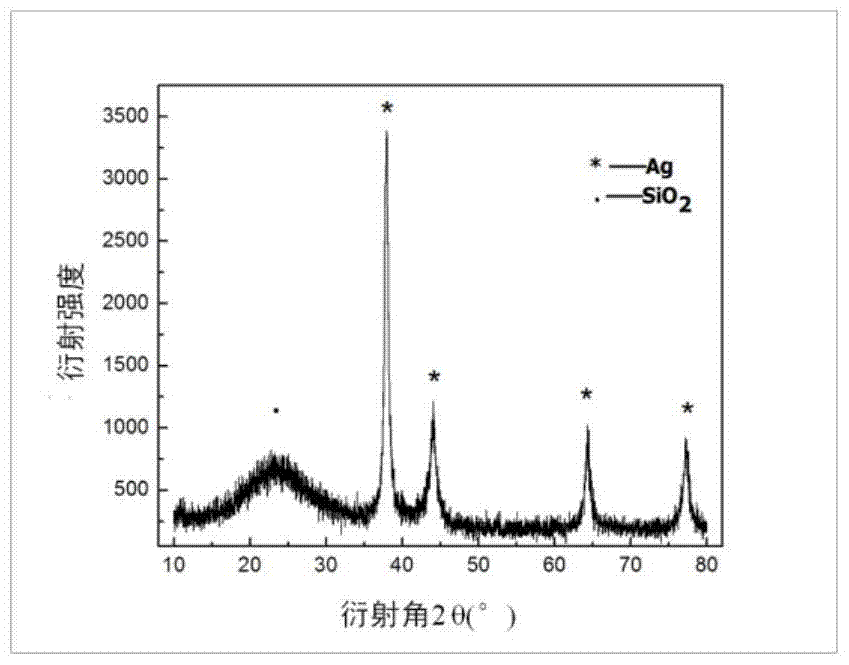Preparation method of a dual-cure dental antibacterial adhesive based on nano-silver
A dual curing and adhesive technology, which is applied in the direction of dental preparations, antibacterial drugs, medical preparations containing active ingredients, etc., can solve the problem that the resin is difficult to be fully dispersed, the adhesive structure is uneven, and the bonding strength Decrease and other problems, to achieve the effect of stable and durable antibacterial performance, stable binder system and good dispersibility
- Summary
- Abstract
- Description
- Claims
- Application Information
AI Technical Summary
Problems solved by technology
Method used
Image
Examples
Embodiment 1
[0051] a. In 100 parts by volume of absolute ethanol, add 100 parts of deionized water and 12 parts of 28% concentrated ammonia water, stir evenly at 25°C, and then add 20 parts of tetraethyl silicate dropwise (TEOS), heated and stirred for 18 hours;
[0052] b. Centrifuged, washed and dried at room temperature to obtain monodisperse spherical SiO 2 particles;
[0053] c. SiO obtained by b. 2 Dispersed in deionized water by ultrasonic method, SiO 2 The mass ratio with water is 2:100, and every 1 part of SiO 2 The aqueous solution was mixed with 2 parts of silver ammonia solutions with a concentration of 0.3mol / L, and stirred at room temperature for 3 hours;
[0054] d. After centrifuging and washing the mixture obtained in c three times, disperse it in 7 parts of deionized water;
[0055] e. Add 3 parts of a reducing agent solution with a concentration of 0.3 mol / L to the dispersion obtained in d, stir for 1 hour at a temperature of 25° C., and obtain silver-loaded silico...
Embodiment 2
[0061] a. In 100 parts by volume of absolute ethanol, add 2 parts of deionized water and 12 parts of 28% concentrated ammonia water, stir evenly at 25°C, and then add 20 parts of tetraethyl silicate dropwise (TEOS), heated and stirred for 18 hours;
[0062] b. Centrifuged, washed and dried at room temperature to obtain monodisperse spherical SiO 2 particles;
[0063] c. SiO obtained by b. 2 Dispersed in deionized water by ultrasonic method, SiO 2 The mass ratio with water is 2:100, and every 1 part of SiO 2 The aqueous solution was mixed with 2 parts of silver ammonia solutions with a concentration of 0.3mol / L, and stirred at room temperature for 3 hours;
[0064] d. After centrifuging and washing the mixture obtained in c three times, disperse it in 7 parts of deionized water;
[0065] e. Add 3 parts of a reducing agent solution with a concentration of 0.3 mol / L to the dispersion obtained in d, stir for 1 hour at a temperature of 25° C., and obtain silver-loaded silicon ...
Embodiment 3
[0071] a. In 100 parts by volume of absolute ethanol, add 100 parts of deionized water and 12 parts of 28% concentrated ammonia water, stir evenly at 25°C, and then add 20 parts of tetraethyl silicate dropwise (TEOS), heated and stirred for 18 hours;
[0072] b. Centrifuged, washed and dried at room temperature to obtain monodisperse spherical SiO 2 particles;
[0073] c. SiO obtained by b. 2 Dispersed in deionized water by ultrasonic method, SiO 2 The mass ratio with water is 2:100, and every 1 part of SiO 2 The aqueous solution was mixed with 2 parts of silver ammonia solutions with a concentration of 0.3mol / L, and stirred at room temperature for 3 hours;
[0074] d. After centrifuging and washing the mixture obtained in c three times, disperse it in 7 parts of deionized water;
[0075] e. Add 3 parts of a reducing agent solution with a concentration of 0.3 mol / L to the dispersion obtained in d, stir for 1 hour at a temperature of 50° C., and obtain silver-loaded silico...
PUM
| Property | Measurement | Unit |
|---|---|---|
| particle diameter | aaaaa | aaaaa |
| particle diameter | aaaaa | aaaaa |
| antibacterial rate | aaaaa | aaaaa |
Abstract
Description
Claims
Application Information
 Login to View More
Login to View More - R&D
- Intellectual Property
- Life Sciences
- Materials
- Tech Scout
- Unparalleled Data Quality
- Higher Quality Content
- 60% Fewer Hallucinations
Browse by: Latest US Patents, China's latest patents, Technical Efficacy Thesaurus, Application Domain, Technology Topic, Popular Technical Reports.
© 2025 PatSnap. All rights reserved.Legal|Privacy policy|Modern Slavery Act Transparency Statement|Sitemap|About US| Contact US: help@patsnap.com



